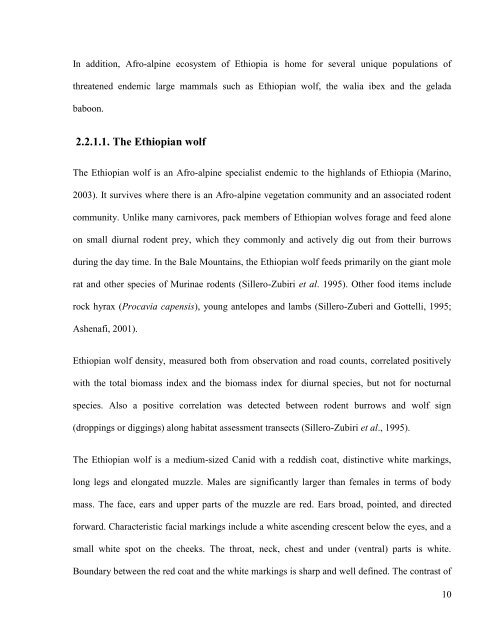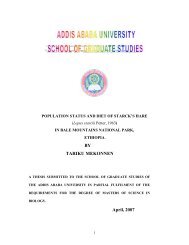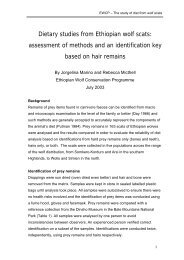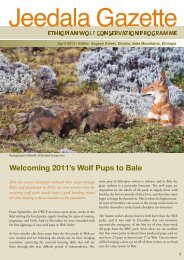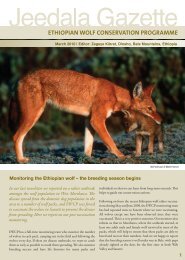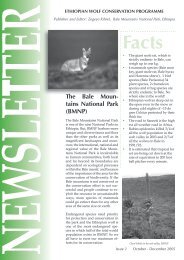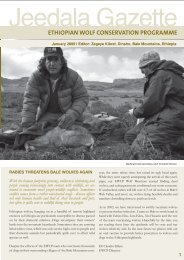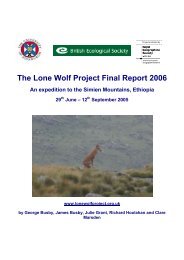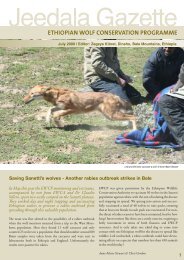Girma-Eshete-Jenbere-thesis - Ethiopian Wolf Conservation ...
Girma-Eshete-Jenbere-thesis - Ethiopian Wolf Conservation ...
Girma-Eshete-Jenbere-thesis - Ethiopian Wolf Conservation ...
You also want an ePaper? Increase the reach of your titles
YUMPU automatically turns print PDFs into web optimized ePapers that Google loves.
In addition, Afro-alpine ecosystem of Ethiopia is home for several unique populations of<br />
threatened endemic large mammals such as <strong>Ethiopian</strong> wolf, the walia ibex and the gelada<br />
baboon.<br />
2.2.1.1. The <strong>Ethiopian</strong> wolf<br />
The <strong>Ethiopian</strong> wolf is an Afro-alpine specialist endemic to the highlands of Ethiopia (Marino,<br />
2003). It survives where there is an Afro-alpine vegetation community and an associated rodent<br />
community. Unlike many carnivores, pack members of <strong>Ethiopian</strong> wolves forage and feed alone<br />
on small diurnal rodent prey, which they commonly and actively dig out from their burrows<br />
during the day time. In the Bale Mountains, the <strong>Ethiopian</strong> wolf feeds primarily on the giant mole<br />
rat and other species of Murinae rodents (Sillero-Zubiri et al. 1995). Other food items include<br />
rock hyrax (Procavia capensis), young antelopes and lambs (Sillero-Zuberi and Gottelli, 1995;<br />
Ashenafi, 2001).<br />
<strong>Ethiopian</strong> wolf density, measured both from observation and road counts, correlated positively<br />
with the total biomass index and the biomass index for diurnal species, but not for nocturnal<br />
species. Also a positive correlation was detected between rodent burrows and wolf sign<br />
(droppings or diggings) along habitat assessment transects (Sillero-Zubiri et al., 1995).<br />
The <strong>Ethiopian</strong> wolf is a medium-sized Canid with a reddish coat, distinctive white markings,<br />
long legs and elongated muzzle. Males are significantly larger than females in terms of body<br />
mass. The face, ears and upper parts of the muzzle are red. Ears broad, pointed, and directed<br />
forward. Characteristic facial markings include a white ascending crescent below the eyes, and a<br />
small white spot on the cheeks. The throat, neck, chest and under (ventral) parts is white.<br />
Boundary between the red coat and the white markings is sharp and well defined. The contrast of<br />
10


